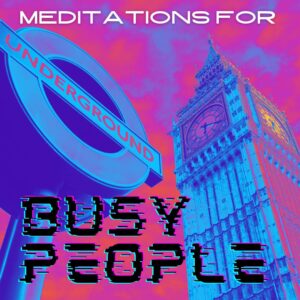SAFEGUARDING POLICY & PROCEDURES
Kadampa Meditation Centre London (KMC London) adopted Safeguarding Policy and Procedures on 15th May 2021. This document summarises the policy and procedures that were adopted, a full copy of which is available for review in the centre’s office upon request.
The safeguarding policy and its related procedures apply to all Directors, managers, sponsored staff and volunteers of the Charity, and to all members of the residential community at Kadampa Meditation Centre London. All of these persons are required to accept and personally abide by the policy and procedures.
The purpose of this policy is to provide Directors, managers, staff, residents and volunteers of KMC London with guidelines for the safeguarding of everyone who comes into contact with the Charity, particularly children and adults-at-risk.
Statement of Policy
KMC London (“the Charity”) is committed to organizing and carrying out its activities in a way that safeguards and promotes the welfare of everyone who comes into contact with the Charity, particularly children and adults-at-risk. The Object of the Charity is to promote the Buddhist Faith, and a fundamental commitment of followers of the Buddhist Faith is not to harm others. In the Internal Rules of the New Kadampa Tradition – International Kadampa Buddhist Union, it states that the Centre shall always remain as a pure, peaceful and harmonious society. All Directors, managers, staff, residents and volunteers of Kadampa Meditation Centre London personally abide by these Internal Rules.
Safeguarding is everyone’s responsibility
All children and adults-at-risk have a right to equal protection from all types of harm or abuse, regardless of age, disability, gender, racial heritage, religious belief, sexual orientation or identity. Some children and adults-at-risk are especially at risk because of the impact of past experiences, their level of dependency or their communication needs, or because of other issues.
Child is defined as any person under the age of 18. Adult-at-risk means any person aged 18 years and over who is in need of community care services (by reason of mental health issues, learning or physical disability, sensory impairment, age or illness) and who is unable to take care of him/herself, or unable to protect him/herself against significant harm or serious exploitation.
Procedure for Raising Concerns
• safeguarding concerns regarding a child or adult-at-risk should be raised with the Designated Safeguarding Officer “DSO” (presently Jennifer Andrews), or in her absence the Deputy Designated Safeguarding Officer “Deputy DSO” (presently Emily Clay)
• if such a concern implicates the DSO, then it should be raised with the Deputy DSO
• if such a concern implicates the DSO and Deputy DSO, then it should be raised with the relevant local Adult’s or Children’s Social Care office (see contact details below)
• the person raising the concern must record information about the concern on the same day. This record must be a clear, precise and factual account of their observations
• the DSO/Deputy DSO will check to determine the accuracy/truth of the concern, and decide whether the matter should be referred to the relevant local Adult’s or Children’s Social Care office.
Guidelines for Dealing with a Disclosure
If someone discloses that he or she has been abused, the person to whom it is disclosed should:
• listen to what is being said without displaying shock or disbelief
• accept what is being said
• allow the person to talk freely
• reassure the person, but without making promises which might not be possible to keep
• not promise confidentiality, because it might be necessary to refer the case to the relevant Social Care Department
• reassure the person that what happened was not their fault
• stress that they were right to disclose the abuse
• listen, rather than ask direct questions
• ask open questions rather than leading questions
• not criticise the alleged perpetrator
• explain what has to be done next, and who has to be told
• use the following Guidelines for Recording a Disclosure.
Guidelines for Recording a Disclosure
• make some brief notes as soon as possible after the conversation
• do not destroy these original notes, in case they are needed later by a court
• record the date, time and place of the disclosure, the words used by the person making the disclosure, and any unusual non-verbal behaviour that they displayed
• draw a diagram to indicate the position of any bruising or other injury
• be careful to record statements and observations, rather than interpretations or assumptions
• pass the record of the disclosure immediately and directly to the DSO or Deputy DSO.
Confidentiality
• any disclosure of abuse should immediately be passed to the DSO/Deputy DSO
• any access to personal information by staff/volunteers is strictly role-specific
• staff/volunteers are expected to treat information that they receive about a child or adult-at-risk in a discreet and confidential manner, regarding the safety and privacy of the child or adult-at-risk to be of the upmost importance
• all staff should be cautious when passing information to others about a child or adult-at-risk, and should check the appropriateness with the DSO/Deputy DSO.















